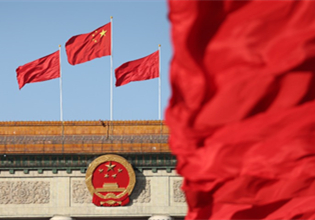Inner Mongolia gets top results in environment improvement

A news conference on desertification controls is held in North China’s Inner Mongolia autonomous region. [Photo/Inner Mongolia Daily]
North China’s Inner Mongolia autonomous region has achieved great results with its ecological environment improvement, according to information released at a news conference held by its information office on July 15.
Since November 2012, Inner Mongolia has completed more than 12 million mu, or 800,000 hectares, of tree planting annually, ranking it top in the country.
In 2019, the forest coverage rate in Inner Mongolia increased to 22.1 percent, an increase of 1.07 percentage points from 2013. The autonomous region’s forest covered an area of 392 million mu and the volume of forest was 1.53 billion cubic meters, an increase of 19.05 million mu and 182 million cu m, respectively.
Officials said that from 2013 to 2020, 1.02 billion mu of grassland in Inner Mongolia has been implementing a livestock and grazing balance system.
Over the same period, an average area of 15 million mu has been planted with grass seedlings annually, ranking first across the country.
In 2019, the coverage of grassland in Inner Mongolia reached 44 percent, an increase of 4 percentage points from 2012.
Meanwhile, obvious results have been achieved in the control of soil erosion in Inner Mongolia.
According to the 2018 National Monitoring Report on Soil and Water Loss, the area hit by soil and water loss in the autonomous region was 592,700 square kilometers. Compared with the results of the first national water census in 2011, the area of soil and water loss has decreased by 36,300 sq km, or by 6 percent.
Every year, Inner Mongolia completes the treatment of more than 9 million mu of soil-eroded land. To date, a total of 13 national desertification protection zones have been built in the autonomous region, officials said.



 Print
Print Mail
Mail





